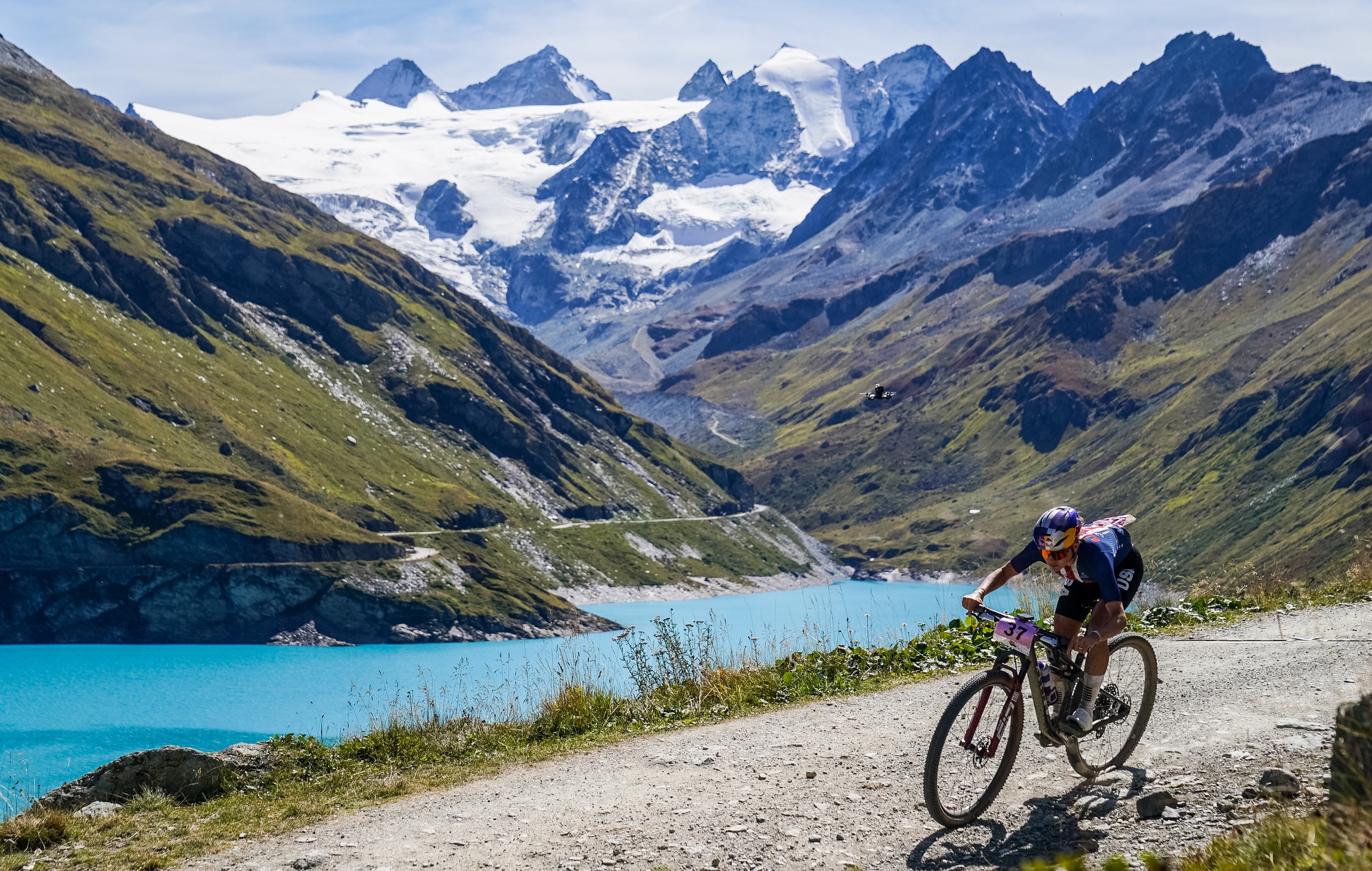Best women’s cycling gloves: Protection and comfort rolled into one
A selection of the best short- and long-fingered gloves for women, no matter the conditions
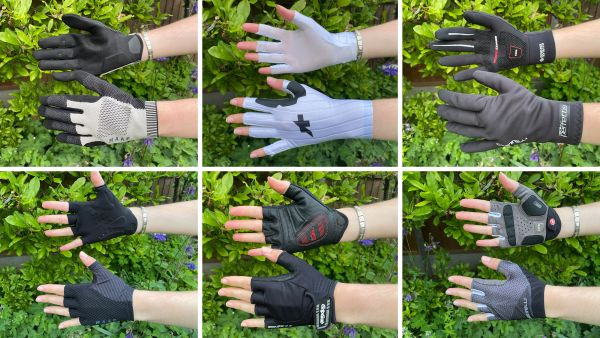
Finding the perfect pair of gloves can be a little tricky, especially when looking for women-specific ones due to sizing and fit issues. Not only that, but it can also become pretty expensive when it comes to buying and trying in order to find that perfect pair. But fear not, for we have done the groundwork for you and laid out our picks of the best women's cycling gloves below.
I have tried and tested a range of women-specific and unisex cycling gloves to find the best women’s cycling gloves on the market today. This guide should cover all of your spring-to-summer riding needs, with a sprinkling of options for whatever else the weather decides to throw at you during your two-wheeled endeavours. You can also check out our best cycling gloves guide for some other options and our best winter gloves guide for when temperatures drop.
Whether you are looking for a pair suited to racing, leisure riding or off-road adventuring, I tested a wide range of styles, carefully following the sizing guides to do so. So whatever your budget is, have a gander, and I'm sure you’ll find your new favourite pair of gloves.
Best women’s cycling gloves
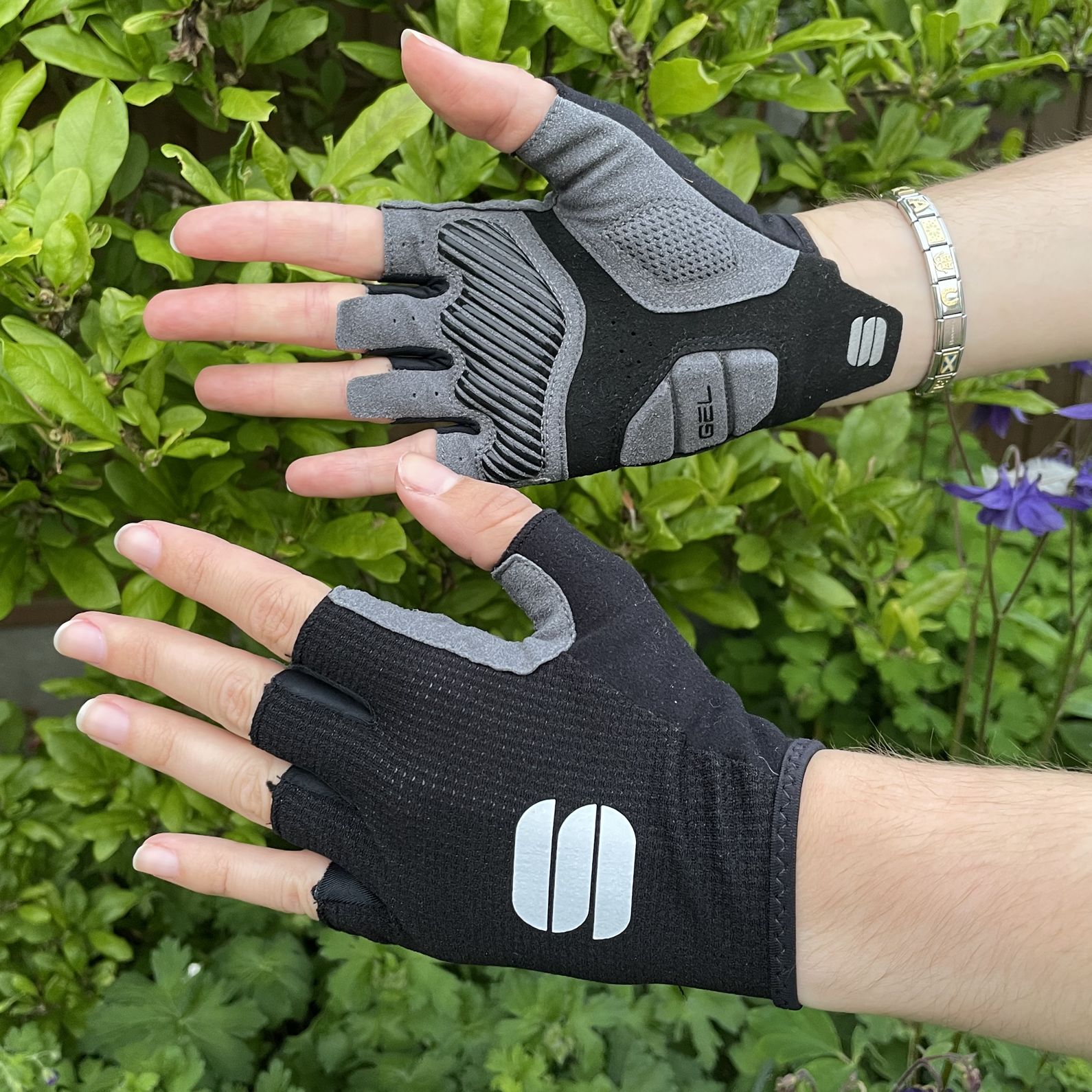
➕ Very well padded
➕ Very comfortable
➕ Breathable
➖ Not very waterproof
A pair of pull-on mitts that are perfect for racing or training to keep your hands protected as well as comfortable, thanks to their generous amount of padding on the palm of each hand.
The gloves offer a great fit and the lack of velcro makes them feel a lot more comfortable and less bulky in comparison to other options.
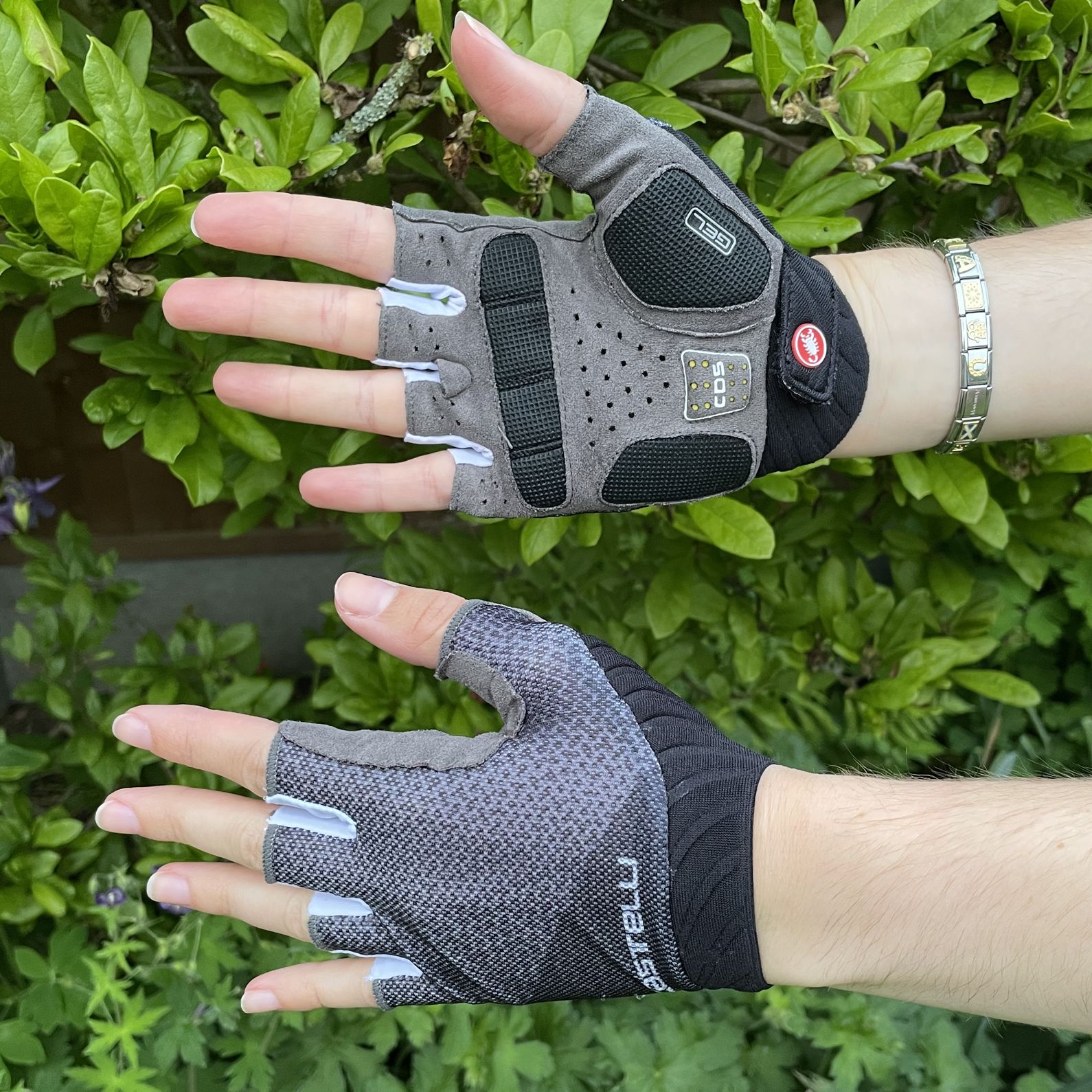
➕ Good price for the quality
➕ Comfortable
➕ Breathable
➖ Not the most stylish
A comfortable and breathable pair of gloves which are easy to slip on and off. Tested when out riding in the heat, these gloves came up trumps on warm rides thanks to their impressive breathability.
Comfortable after being worn all day, the gloves also have ample padding and are a great price for the quality.
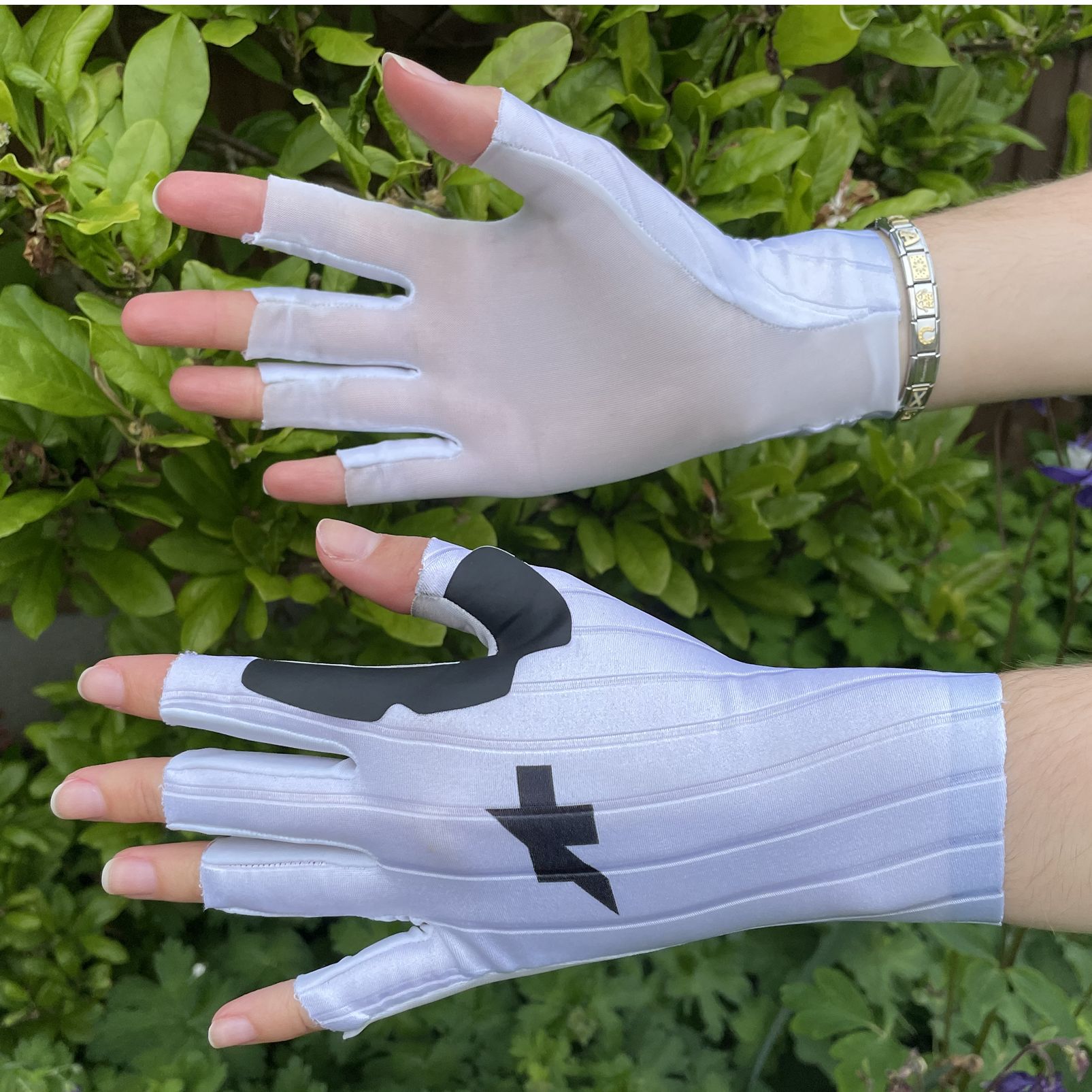
➕ Aerodynamic
➕ Great length
➕ Looks fancy
➖ Expensive
➖ No padding
➖ Fragile palm netting
Made for aero gains, the RSR Speed gloves aim to make you as fast as possible, making them especially useful for road, time trials and track racing.
Our tester was impressed with the length of the cuff, the streamlined feel and enjoyed the lack of padding - although this would not be to everyone's taste.
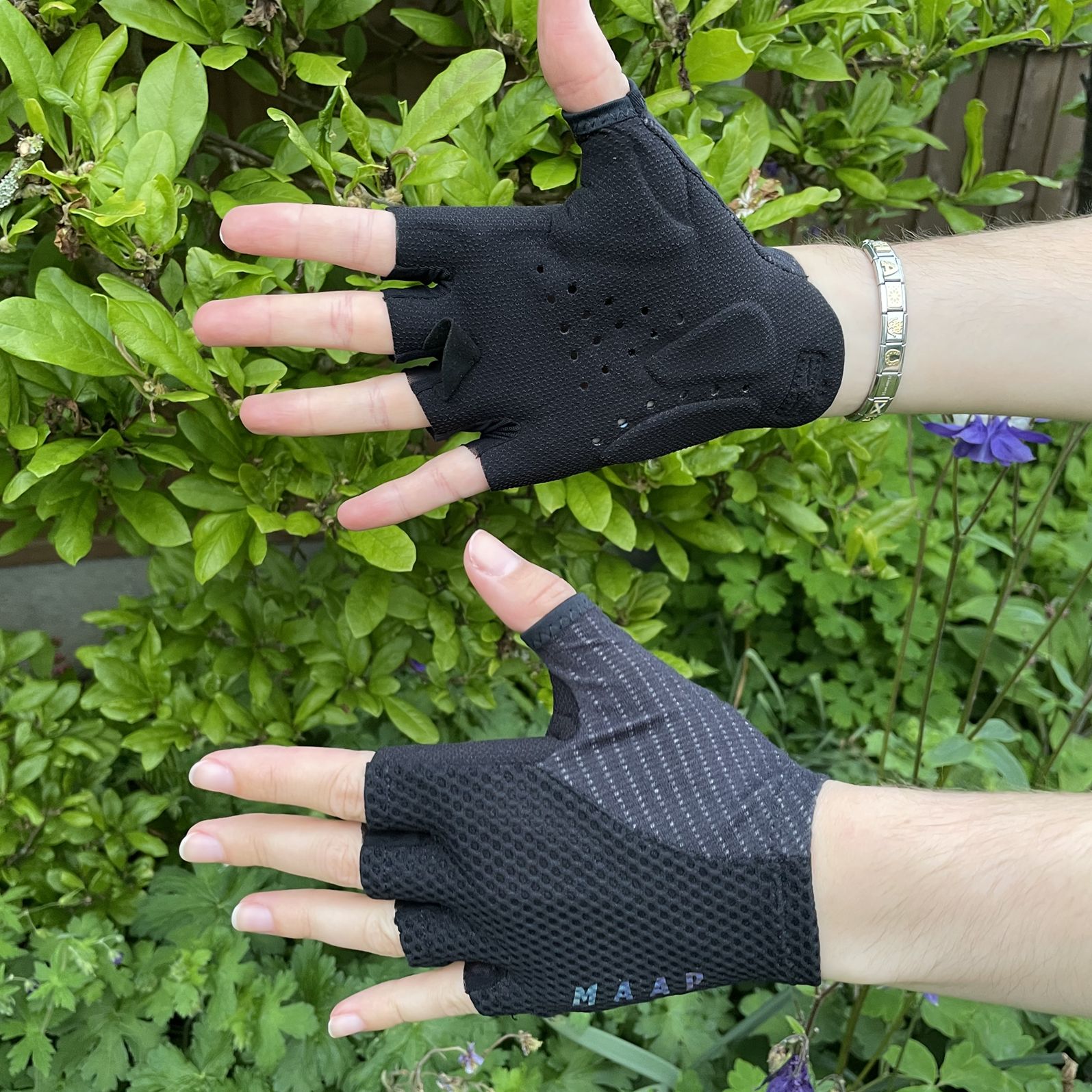
➕ Comfy
➕ Breathable
➕ Stylish
➖ Expensive
➖ Sizing is a little off on the palm
These pull-on gloves are breathable, thanks to the venting on the palm and mesh on the top, and offer ample padding, especially around the thumb. Our tester found these gloves look great and feel premium too.
However, one note is that it's worth trying these gloves on in person, as our tester found the fit a little off.
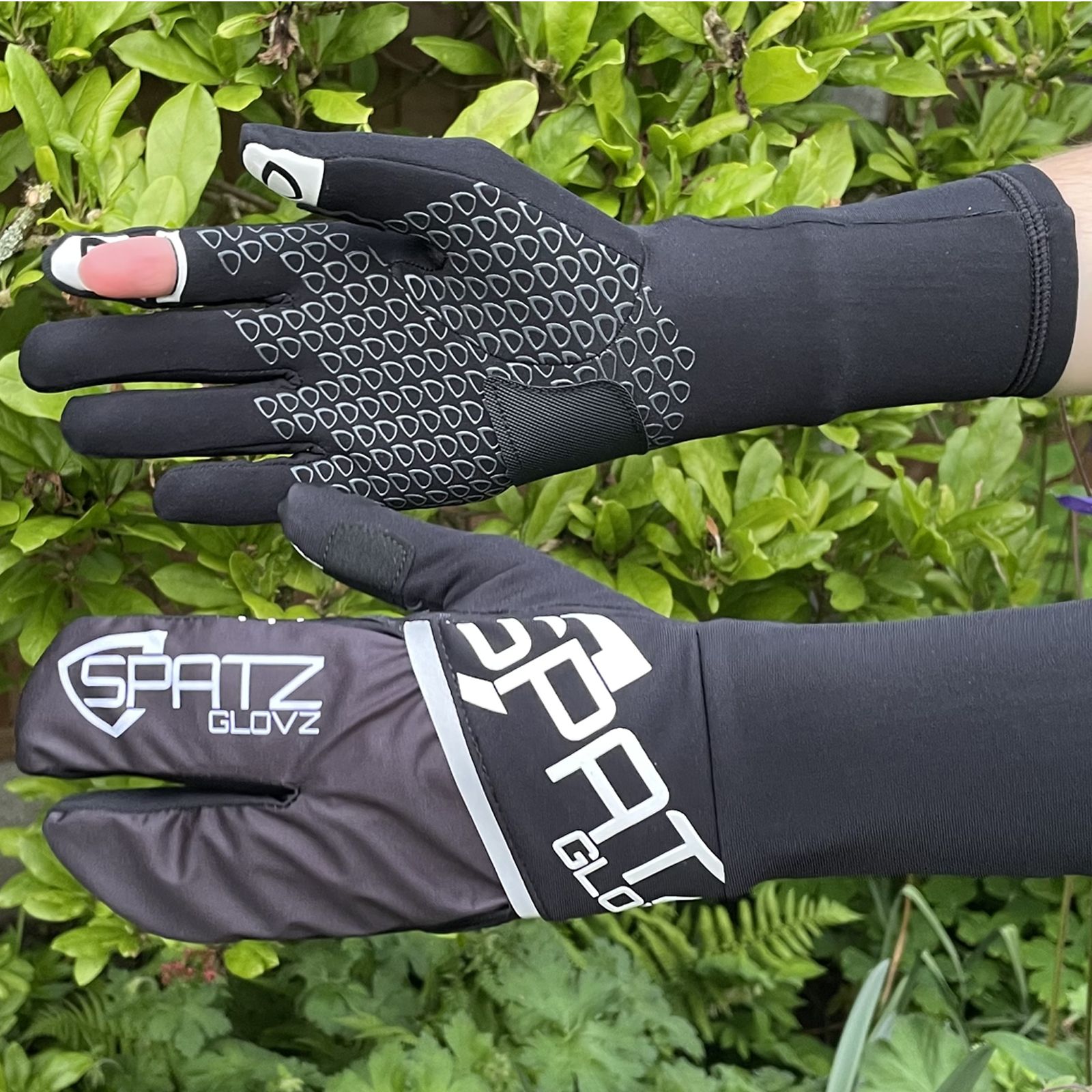
➕ High cuff
➕ Versatile
➕ Palm grippers
➖ Expensive
➖ Not for very small hands
Best suited to winter riding, these gloves are perfect for keeping cold hands warm without feeling too thick or restrictive. The cuff comes up nice and high, which is great for ensuring your wrists stay protected from the elements when layered up. Our tester liked the stretchy material and how the gloves are essentially two-in-one, thanks to the extra layer which folds out.
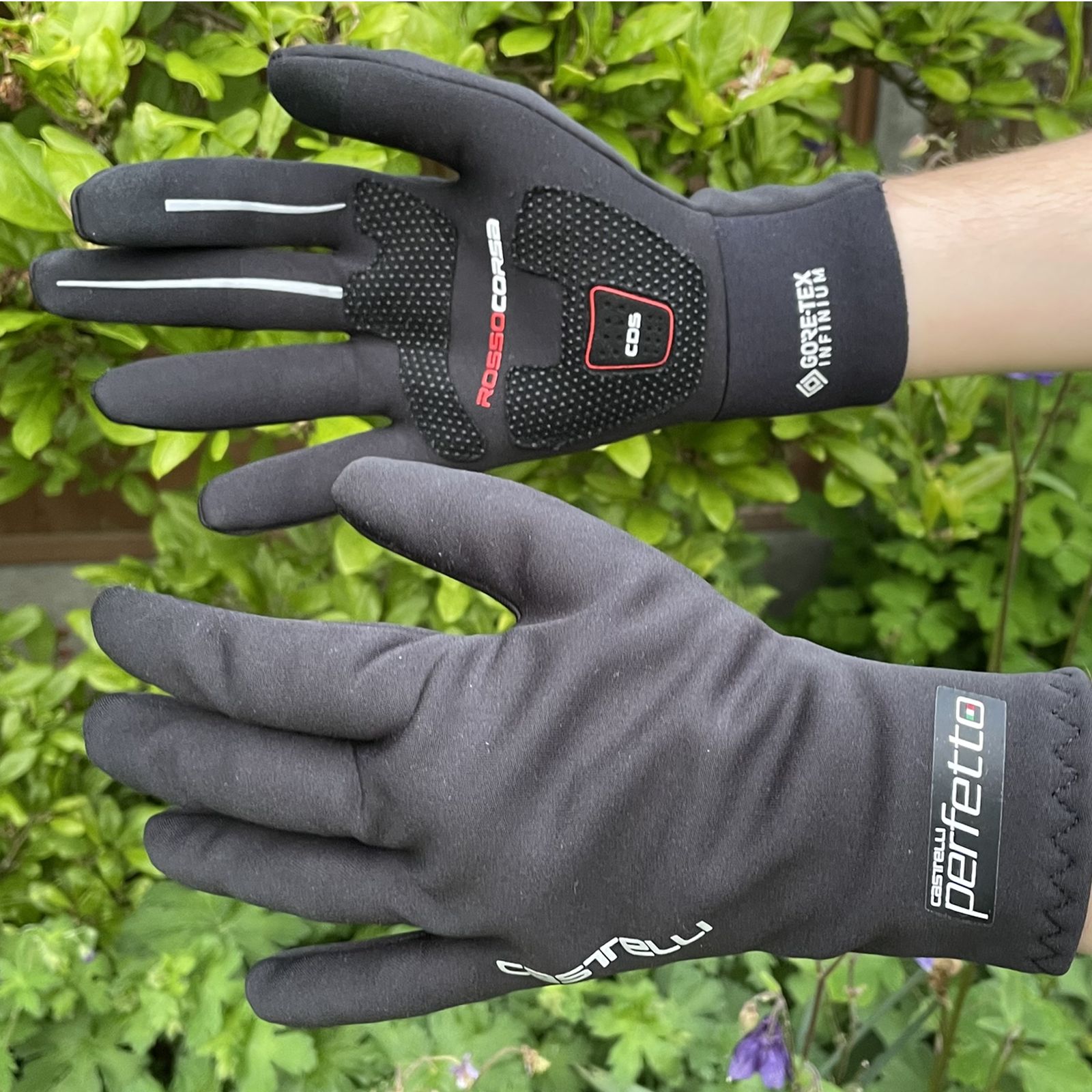
➕ Great fit
➕ Gore-Tex Infinium Windstopper material
➕ Comfy padding on the inside
➖ Expensive
Looking for intermediate weather gloves (or what we call British summertime) that are both comfortable and offer a great level of protection from the showers and full-on rain? Look no further. Our tester was seriously impressed with these gloves, as they offer a great fit, a soft inner lining, ample comfort and padding.
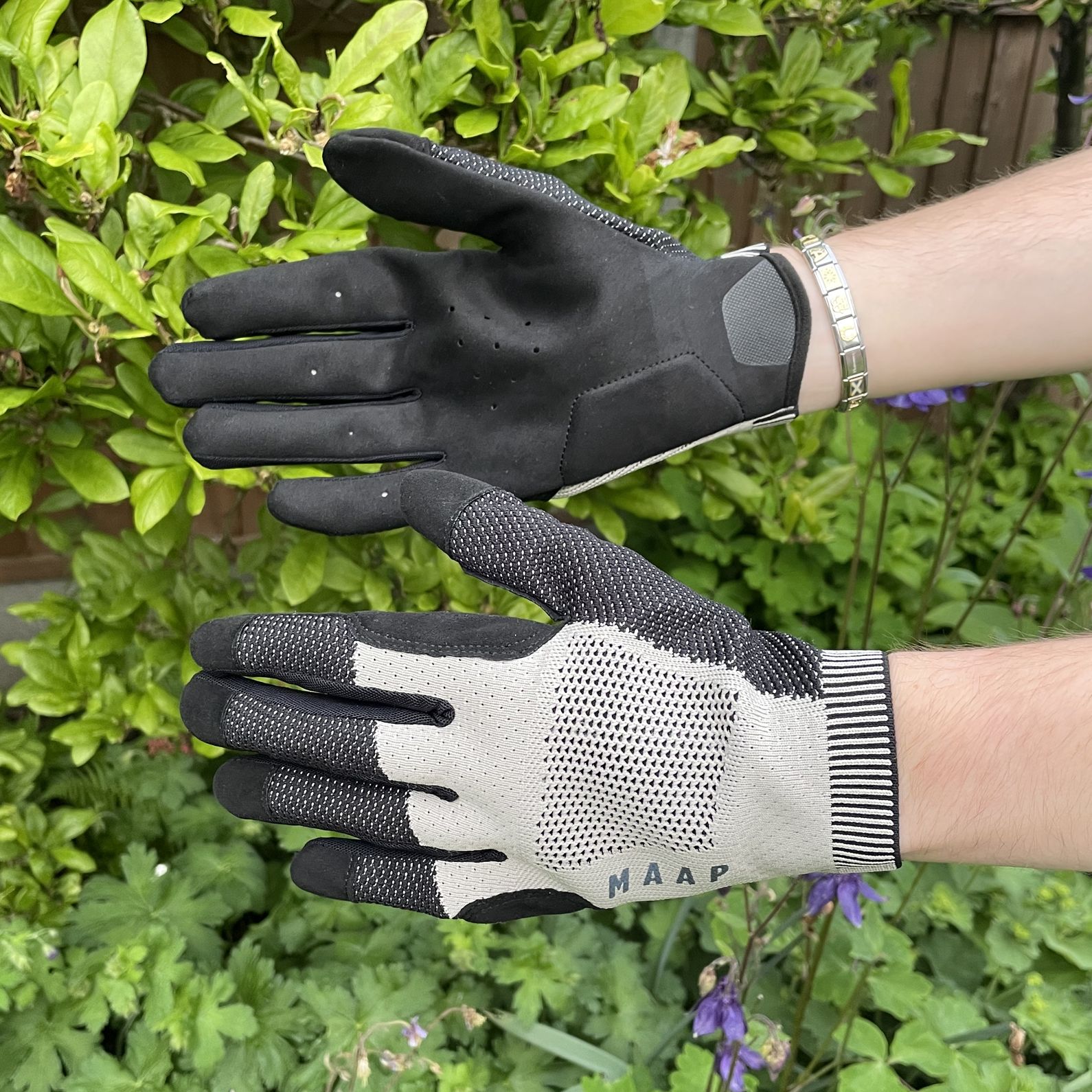
➕ Good water repellency
➕ Robust and durable
➕ Comfortable padding
➖ Expensive
For those after a gravel-style glove, the Alt_Road glove from MAAP is a great option. The outer is a comfy and breathable mesh material which beads water very effectively, thanks to the gloves' water-repellent properties. Our tester found these gloves true to size, exceptionally comfortable and worked well over uneven terrain. The gloves also feature a venting system, which prevents any overheating.
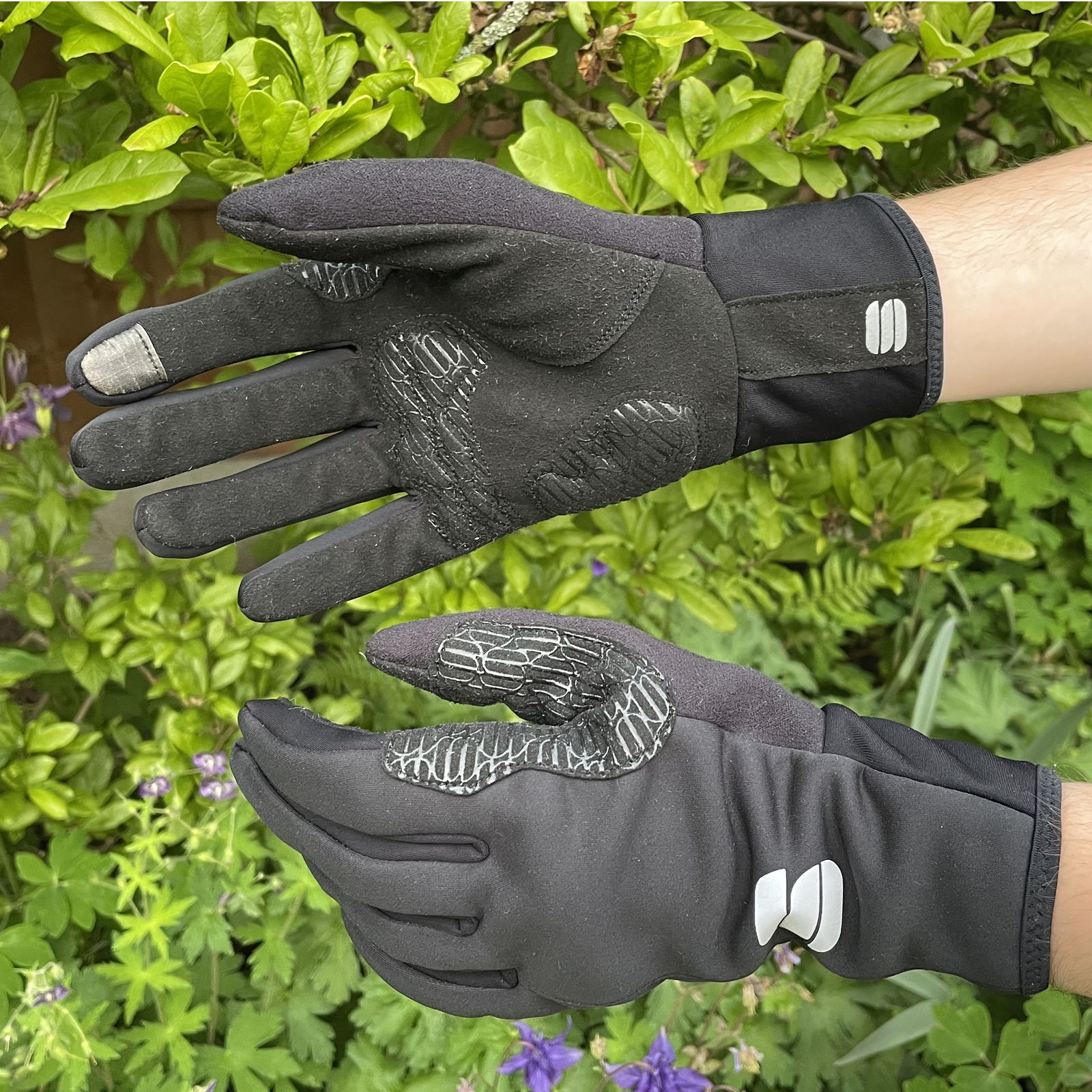
➕ Water-resistant
➕ Well-padded
➕ Very comfortable
➖ Could be too warm for some
The perfect dupe of the Castelli Women's Perfetto ROS Gloves and coming from the sister-brand Sportful, our tester was thoroughly impressed by these gloves.
The gloves feature Gore-Tex Infinium material which is very windproof, but most noticeably water-repellent, and the material is soft and comfortable with ample padding. A great pair of gloves for an excellent price.
Last updated on 9th October 2025
The guide has been updated to ensure products are up to date. An Also Consider section was also added, giving easily digestible advice on what to look for when choosing the best cycling gloves.
How to choose the best gloves for women
If you are shopping for a pair of bike gloves for women, then here are a few things worth considering.
- Do you're hands get uncomfortable when riding? If you're looking to add more comfort on long or rough rides, picking a glove with thicker padding or gel inserts in the palm will help reduce vibrations.
- Do you want a better grip on the handlebars? If you want to enhance control, a glove with a thinner palm will give better bar feel.
- Do you get hot hands? If you ride in warm weather, you will want to go for a thinner glove or a fingerless design to increase breathability.
- Do you ride in bad weather? Best to go for a full-length finger and look for a glove with windproof panels, waterproofing, a thicker cuff or extra insulation to protect from wind, rain and cold.
- What other features might you need? For commuting, reflective details are always worth considering and a little bit of towelling is handy for wiping your nose while riding. If you're anything like me, another must-have is touch screen compatibility.
Everything you need to know about the best womens cycling gloves
What things should I look for when buying gloves?
Your climate and type of riding will largely dictate what style of gloves will best fit your requirements. For example, if you do a lot of riding for long distances on the road and you want gloves for warmth because you feel the cold, a set of long-finger gloves with a generous amount of padding will suit your needs best. Looking out for other useful features such as water repellency, will also help to keep your hands warm come rain or shine.
It's also worth thinking about a good-length cuff to keep your wrist warm and sit nicely under a jacket or base layer. Some riders prefer to avoid too much bulk to retain a good handlebar feel and sensations when braking and changing gears.
A soft, cosy interior that feels great and putting your hands into a plush-feeling winter glove helps you feel ready to face the cold and a nose wipe panel can be really useful too.
Do I need gloves for road cycling?
Whether or not you will need gloves for cycling on the road will be down to your own judgement. Gloves are useful when it’s colder to help keep your hands warm and able to change gear (even during the spring and summer), especially when it’s raining.
As well as that, gloves can also be useful when it comes to protecting your hands. Be it from the vibrations of the road due to cobble,s which padding can help quash, chaffing from your bars or in the event of an unfortunate date with the floor: if you don’t wear gloves and hit the deck, you can sustain abrasion and road rash on your hands, which can be really painful. Therefore, a pair of short-finger gloves can act as a second skin, similar to a base layer, to stop you from cutting your skin.
Another form of protection gloves offer is from the sun and wearing a pair of short-finger gloves during the warmer months can help protect your hands from the UVA and UVB rays.
Should cycling gloves be padded or not?
Much like the best women's saddles, the preferred amount of glove padding is entirely personal. For example, if you personally feel that your hands often feel a little numb or sore after riding your bike, then a pair of well-padded gloves should help your hands feel less achy during and after riding.
However, you might find that you don’t need the padding and just want gloves to protect you from road rash in the event of a crash or from the sun. Therefore, whether or not gloves should be padded is entirely down to the individual and what their needs are.
Should I get full-finger or fingerless gloves for cycling?
During the warmer months, short-finger gloves will likely be the best option when it comes to dressing suitably for the weather. This is because they allow breathability through ventilation and most have been designed to wick away sweat to keep you cool.
However, it’s always good to be prepared and have long-finger gloves for the colder days and when riding in the rain. Therefore, long-finger gloves that are not too thick and have been designed for intermediate temperatures are a great piece of equipment to have.
Especially as many long-finger options are still fairly thin, meaning you won’t overheat, but benefit from featuring materials that are water repellent, so when caught in showers on rainy summer days, your hands will be protected and thus won’t become numb from being wet.
Is there such a thing as waterproof gloves?
The answer depends on the timeframe we are talking about. A good pair of gloves with a waterproof membrane, or even a DWR coating, will keep your hands dry for a while. Ride long enough though and they all saturate. The only option that is actually waterproof is a shell or a fully sealed neoprene glove. Sportful makes a shell I included here, but there are some others out there. They are truly waterproof, but they also require another glove for warmth and that second glove will eventually get wet also. When you leave the house on a bitterly cold day, you might make it through a ride with only a single pair of gloves. If you leave the house and it's raining, you will need a change of gloves if you ride longer than about three hours.
How do we test?
During testing, I first considered how well the sizing fitted compared to the size guide (which I always followed), as well as the fabric and how the gloves felt in terms of construction: some being thinner or more robust than others. During the testing process out on the bike, I rode in all conditions, cold, rain, showers and heat. I also raced in quite a few pairs, so each pair had way over 100km worth of testing and were mostly used on long rides which incorporated a range of surfaces, be it smooth tarmac, farm roads, gravel or cobbles. This was to ensure all bases were covered when it comes to the pros and cons of each pair and to find where they really excelled.
For more details of our approach to testing and reviews, head to our How We Test page.
The latest race content, interviews, features, reviews and expert buying guides, direct to your inbox!
